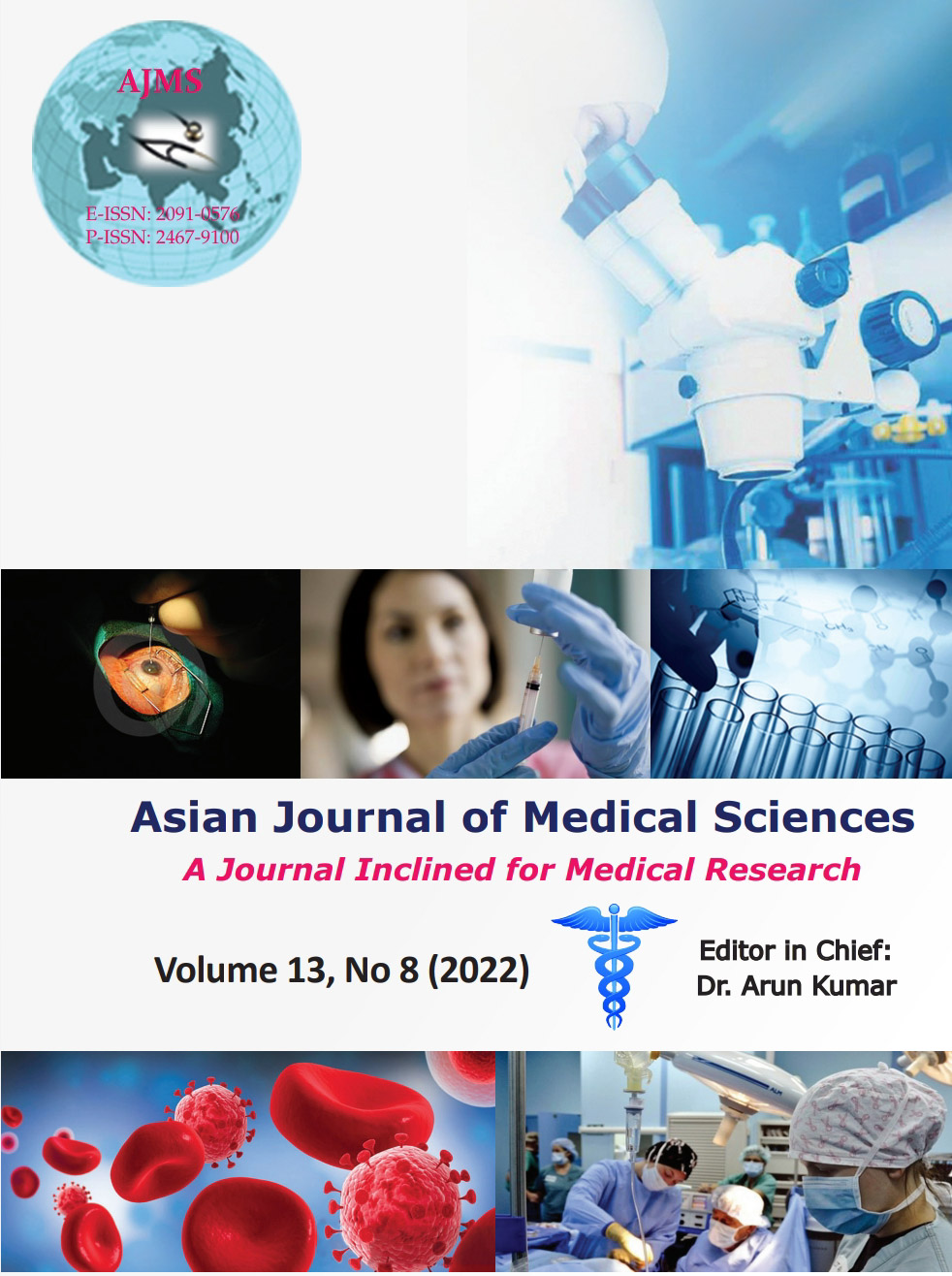An angiogenic marker for early prediction of preeclampsia
Keywords:
Serum soluble endoglin; Preeclampsia; Serum uric acidAbstract
Background: Preeclampsia is a pregnancy-specific disease associated with a high incidence of maternal and fetal morbidity and mortality with classical features of hypertension, proteinuria, and edema.
Aims and Objectives: The aims of the study were to study the angiogenic marker for the early predicting of preeclampsia.
Materials and Methods: Blood samples were collected from 75 healthy singleton pregnant women from 19 to 29 years between 12 and 16 weeks of gestation with no underlying medical illness. The serum soluble endoglin (sEng) level and serum uric acid levels were estimated. Patients who developed preeclampsia were classified as mild and severe. They were classified as severe preeclampsia if their serum sEng levels are above 8.5 ng/ml and mild preeclampsia was grouped when the serum sEng level varies from 7.1–8.4 ng/ml. The serum sEng and serum uric acid levels were compared. Serum sEng was processed by ELISA technique and serum uric acid was measured by Uricase method in autoanalyzer.
Results: The mean uric acid level was 4.0±0.5 mg/dl in severe preeclampsia and 3.6±0.2 mg/dl in mild preeclampsia patients. The levels were within normal limits. The serum sEng levels were 8.7±1.4 ng/ml in severe preeclampsia and 7.7±0.3 ng/ml in mild preeclampsia. The levels are elevated in preeclampsia. Women with serum sEng levels between 7.1 and 8.2 ng/ml developed symptoms of mild preeclampsia between 28 and 30 weeks of gestation, whereas women with serum sEng levels between 8.5 and 13.4 ng/ml developed
symptoms of severe preeclampsia between 26 and 28 weeks of gestation.
Conclusion: Serum uric acid levels were within normal limits in preeclampsia patients, whereas serum sEng levels were elevated in these patients. Thus, this study concludes that serum sEng will be a good predictor of severity of preeclampsia compared to serum uric acid level.
Downloads
Downloads
Published
How to Cite
Issue
Section
License
Copyright (c) 2022 Asian Journal of Medical Sciences

This work is licensed under a Creative Commons Attribution-NonCommercial 4.0 International License.
Authors who publish with this journal agree to the following terms:
- The journal holds copyright and publishes the work under a Creative Commons CC-BY-NC license that permits use, distribution and reprduction in any medium, provided the original work is properly cited and is not used for commercial purposes. The journal should be recognised as the original publisher of this work.
- Authors are able to enter into separate, additional contractual arrangements for the non-exclusive distribution of the journal's published version of the work (e.g., post it to an institutional repository or publish it in a book), with an acknowledgement of its initial publication in this journal.
- Authors are permitted and encouraged to post their work online (e.g., in institutional repositories or on their website) prior to and during the submission process, as it can lead to productive exchanges, as well as earlier and greater citation of published work (See The Effect of Open Access).




